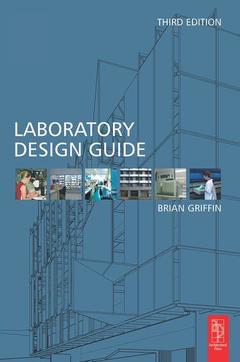Description
Laboratory Design Guide (3rd Ed.)
For Clients, Architects and Their Design Team, The Laboratory Design Process from Start to Finish
Author: Griffin Brian
Language: English
Subject for Laboratory Design Guide:
Keywords
fume; cupboards; brian; griffin; natural; ventilation; spaces; services; spine; NSW; buildings; ESD Principle; Pa Ce; NSW Department; IIP; ESD; Fume Cupboards; Energy Conservation; Above Ground; Clark Center; LA BO; USA; Laboratory Support Facilities; Io; Case Study 8A; Holding; Movable Benches; Local Exhaust Ventilation; Stacked; North; Le Ve; Laboratory Floors; Laboratory Design; Energy Saving
Publication date: 12-2015
· 15.6x23.4 cm · Hardback
Approximative price 63.90 €
Subject to availability at the publisher.
Add to cartPublication date: 08-2004
320 p. · 23.8x15.6 cm · Paperback
Description
/li>Contents
/li>Readership
/li>Biography
/li>Comment
/li>
Laboratory Design Guide 3rd edition is a complete guide to the complex process of laboratory design and construction. With practical advice and detailed
examples, it is an indispensable reference for anyone involved in building or renovating laboratories.
In this working manual Brian Griffin explains how to meet the unique combination of requirements that laboratory design entails. Considerations range from safety and site considerations to instrumentation and special furniture, and
accommodate the latest laboratory practices and the constant evolution of science. Case studies from around the world illustrate universal principles of
good design while showing a variety of approaches.
Revised throughout for this new edition, the book contains a brand new chapter on the role of the computer, covering topics such as the virtual experiment, hot desking, virtual buildings and computer-generated space relationship diagrams.
There are also 10 new international case studies, including the Kadoorie Biological Sciences Building at the University of Hong Kong.

